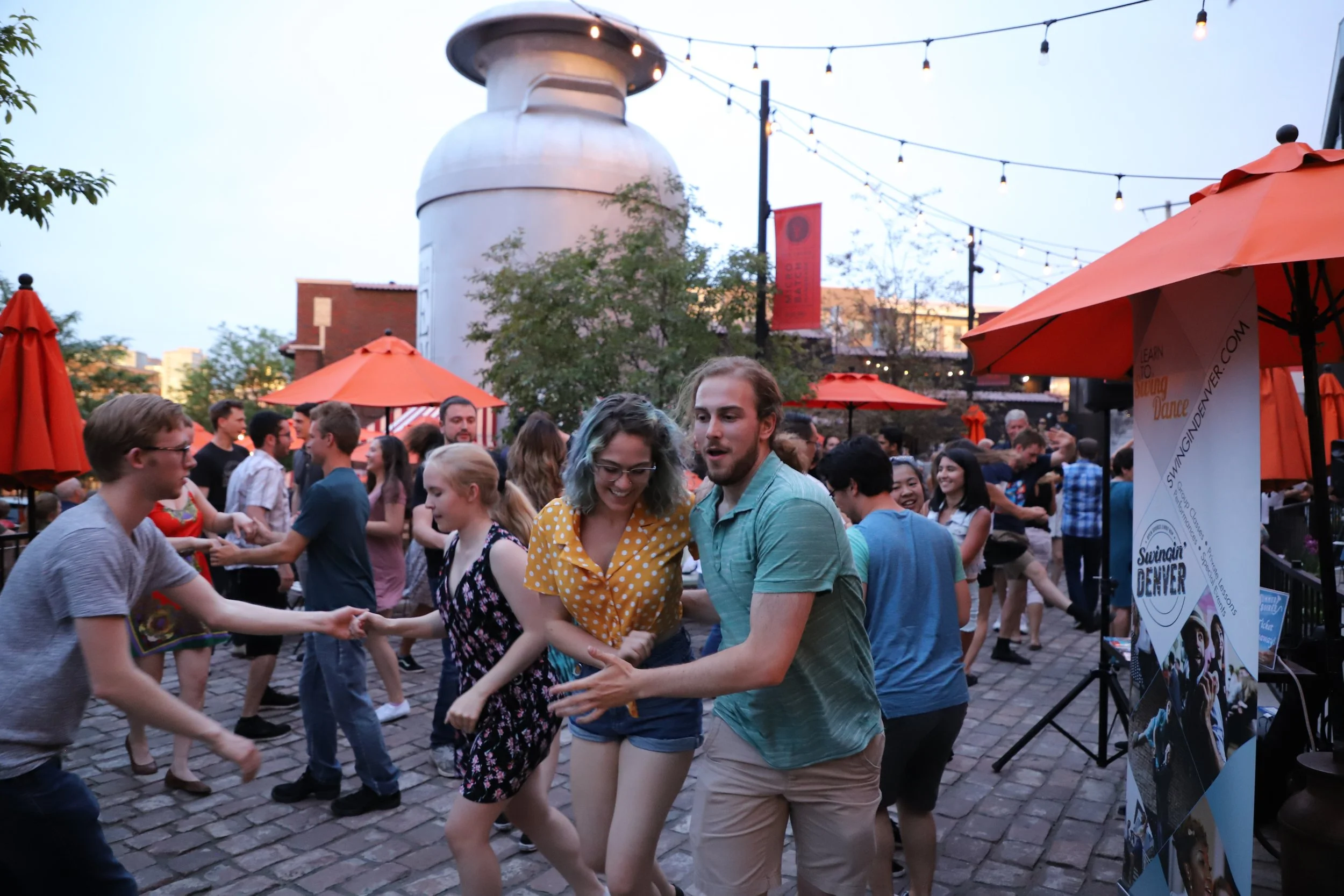Here's an excerpt from a conversation about urban dance that we can see reflected in current naming struggles within the Lindy Hop community. "Urban is problematic because it is not a racial term. It eliminates race. You're taking away the people from the dance."
You can likely draw a line from this statement to swing schools and instructors utilizing terms such as "jitterbug" or "east coast swing" to label classes teaching Lindy Hop with slow and quick rhythms. Whether their intentions are good or not, the more we get away from the origins, the more we erase Black ownership. And, while names change as things evolve, what people call "east coast swing" or "jitterbug" was a devolving or simplification of Lindy Hop.
Swingin' Denver has long since scrapped our own Jitterbug classes, but up until 2019, we had called the beginner swing dance classes we taught at outdoor events "beginner swing dance," jitterbug" or "east coast swing." We did not call it Lindy Hop.
Only after a lot of reading and listening during the pandemic did we make the switch which has been even more emphatic this year. My thoughts and feelings had finally firmly coalesced that we would confidently state we are teaching Lindy Hop with its vernacular dance hallmarks while teaching a particular rhythm (slows and quicks) danced to excellent swing music.
I'm happy to be in this spot since we are now more consistent with what we offer, believe and support. We could not celebrate Lindy Hop, a Black social dance, in one hand and erase the Black origins in the other.
We still have more growing and learning to do, but I wanted to share these thoughts with our audience. I hope other swing dance school will reach these conclusions soon.

